Drilling for War at Idyllic Kalorama
Having enlisted during the first great wave of patriotic fervor after Lincoln’s post-Sumter call for volunteers and having drilled in Elmira, New York for over a month, the 19th New York Volunteer Infantry Regiment arrived Washington, D.C. on June 7, 1861, undoubtedly eager to defend the nation’s capital and put down some rebel traitors. Unfortunately,
In view of the undisciplined state of the command, it was ordered into camp of instruction instead, and, pending the selection of camping ground, it was thought best to quarter it in the city.
So after reaching Washington the 19th’s first move was – north:
North of Washington, within two or three miles of the heart of the city, a range of verdant hills 200 feet in height bounds the plain on which it stands. Further on, the surface swells into hills of greater elevation, on which, afterwards the northern fortifications of the city were located. On the crests of the first range of hills, were built many a number of fine mansions, surrounded by elegant and extensive grounds. Just back of Georgetown, on the eastern bank of Rock Creek, stood the loveliest of these places, once the home of the poet and patriot, Joel Barlow, author of the “Columbiad” and “Hasty Pudding,” named by him Kalorama. In 1861, its occupant, a true patriot, had tendered it to the Government for a camp without cost. To this spot, on the 10th of June, a warm, genial summer’s day, the favored 19th had been ordered to proceed.
The regiment left the City of Magnificent Distances in the afternoon, passing the President’s House and other noted edifices, and reached the heights at 8 p.m. Leaving the main road, it turned to the left into the fields, and marched to a meadow, nine acres in area, in a retired situation, on the top of the banks of the romantic and richly wooded glen of Rock Creek. Glen and woods surrounded the field on three sides. On the fourth, the old mansion stood, now used as a hospital. It was too late and too dark to pitch camp. So the men stacked arms, and bivouacked on the ground under the open stars, some sleeping on boards and all either softening the asperities of their bed with their blankets or using that article as a pillow. The lovely night invested their first taste of genuine campaigning with an air of romance. Sleeping on the ground was a novelty that all relished then.
The 19th settled into camp routine:
Hard study and training then began and continued without remission for a month. The 19th was in Maj.-Gen. Charles W. Sandford’s division of New York troops. It resolved to be the best disciplined regiment in it.
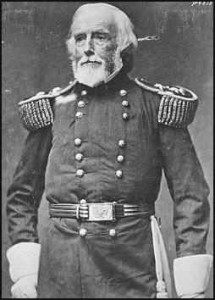
(02-08-2014 -not the real General Mansfield, sorry) Joseph K. Mansfield sends 19th much-needed drill instructors
The camp awoke daily at break of day, or 5 a. m.; the drum corps beating the reveille on the parade ground. All aroused thereat from morning dreams, dressed and washed. The companies then formed for roll call. At 5 1-2 a. m. company drill took place. The duties of the day began thus early to avoid the excessive heat of the middle of the day. This early drill often, and at first generally, took place under West Point cadets, three of whom — Lieuts. Barlow, Redding and Meagher — were sent up by Gen. Mansfield from Washington to teach the manual of arms and the company tactics. At 6 A.M. breakfast was served, consisting of salt pork, salt beef, bread, crackers, potatoes and coffee, varied sometimes with mush and beans. …
... battalion drill at 6. … in the cool edge of the evening, sometimes taking place under the soft moonlight, was the most agreeable of the day. Muskets and equipments were highly polished for it, and every uniform was required to look its best. Visitors were always present to witness it There was a talismanic influence in that title of “The Seward Regiment.” It brought out to Kalorama Heights Senators, Congressmen and distinguished people generally. The President, also, and Secretary Seward came several times. Mr. Seward had always a cordial smile and a cordial grasp of the hand which endeared him to all.
150 years ago today, while Union troops under General Patterson moved into Maryland with the aim of attacking some rebels near Harper’s Ferry, the 19th walked back to D.C.:
June 15th, the regiment marched to Washington and exchanged “those trusty muskets” for Harper’s Ferry smooth bores. They were a better arm than the old ones. Great pride was taken in them, the old ones having been so rickety, that, after firing a volley with them, a basket full of locks and pieces might be picked up in the grass, blown off by the discharge.
Wow, maybe it’s a good thing the 19th didn’t rush off to battle – at least not until they got more reliable weapons.
Text taken from Cayuga in the Field by Henry Hall and James Hall.
Charles W. Sandford had a long career in the New York militia. He was involved with quelling domestic disturbances, including the 1863 New York City draft riots.
Joseph K. Mansfield had a 40 year career in the U.S. army.

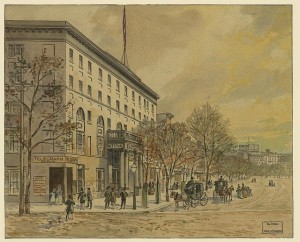
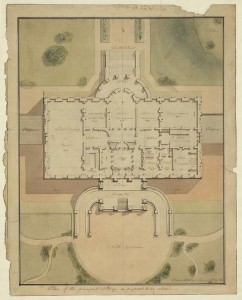
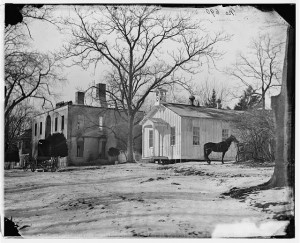
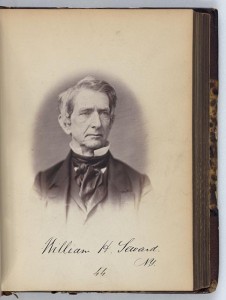
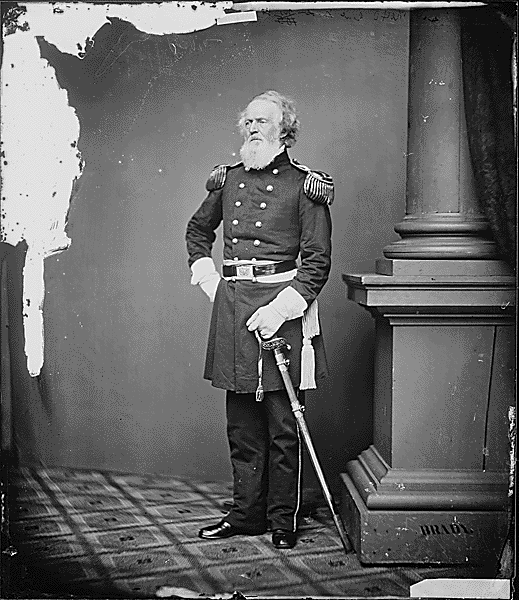
The photograph for Gen. Mansfield is not correct. Here is a link to a correct photo: http://media.nara.gov/media/images/7/14/07-1396a.gif
Thank you. Larry.
Thank you for the correction, Larry